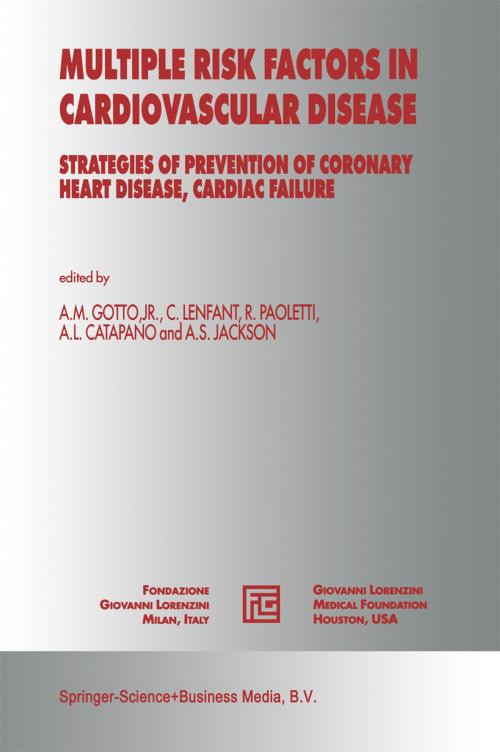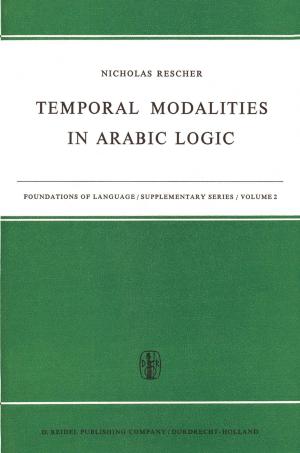Multiple Risk Factors in Cardiovascular Disease
Strategies of Prevention of Coronary Heart Disease, Cardiac Failure, and Stroke
Nonfiction, Health & Well Being, Medical, Specialties, Internal Medicine, Endocrinology & Metabolism, Cardiology| Author: | ISBN: | 9789401150224 | |
| Publisher: | Springer Netherlands | Publication: | December 6, 2012 |
| Imprint: | Springer | Language: | English |
| Author: | |
| ISBN: | 9789401150224 |
| Publisher: | Springer Netherlands |
| Publication: | December 6, 2012 |
| Imprint: | Springer |
| Language: | English |
This volume is a collection of the most significant contributions to the 4th International Symposium on MULTIPLE RISK FACTORS IN CARDIOVASCULAR DISEASE: STRATEGIES OF PREVENTION OF CORONARY HEART DISEASE, CARDIAC F AlLURE, AND STROKE held in Washington, D. C. in April 1997. The meeting focused on the risk factors for cardiovascular disease and their interactions. The need for this symposium is based on the epidemiological, clinical, and biological evidence that individuals from industrialized countries often possess two or more risk factors which synergistically increase the global risk profile. This has become more evident in recent years with the increase in life expectancy of populations in the industrialized countries. The evidence that a combination of risk factors confers a very high risk of developing cardiovascular diseases, is of pivotal interest in the process of detection of patients who will benefit the most from pharmacological treatment. Many recent epidemiological data identifying the intrinsic and environmental factors contributing to the development of atherosclerosis are discussed. These results, in parallel with basic and clinical research, underline atherosclerosis as a complex and multifactorial process involving the influences of lipids, including lipoprotein subfractions, blood pressure rheologic forces, carbohydrate tolerance, and thrombogenic factors, including fibrinogen, tissue factor, PAl-I, and homocysteine. Furthennore, the risk associated with anyone of these risk factors varies widely depending on the level of the associated atherogenic risk factors. Hyper cholesterolemia and hypertriglyceridemia, for instance, are more common than would be expected by chance among hypertensive patients.
This volume is a collection of the most significant contributions to the 4th International Symposium on MULTIPLE RISK FACTORS IN CARDIOVASCULAR DISEASE: STRATEGIES OF PREVENTION OF CORONARY HEART DISEASE, CARDIAC F AlLURE, AND STROKE held in Washington, D. C. in April 1997. The meeting focused on the risk factors for cardiovascular disease and their interactions. The need for this symposium is based on the epidemiological, clinical, and biological evidence that individuals from industrialized countries often possess two or more risk factors which synergistically increase the global risk profile. This has become more evident in recent years with the increase in life expectancy of populations in the industrialized countries. The evidence that a combination of risk factors confers a very high risk of developing cardiovascular diseases, is of pivotal interest in the process of detection of patients who will benefit the most from pharmacological treatment. Many recent epidemiological data identifying the intrinsic and environmental factors contributing to the development of atherosclerosis are discussed. These results, in parallel with basic and clinical research, underline atherosclerosis as a complex and multifactorial process involving the influences of lipids, including lipoprotein subfractions, blood pressure rheologic forces, carbohydrate tolerance, and thrombogenic factors, including fibrinogen, tissue factor, PAl-I, and homocysteine. Furthennore, the risk associated with anyone of these risk factors varies widely depending on the level of the associated atherogenic risk factors. Hyper cholesterolemia and hypertriglyceridemia, for instance, are more common than would be expected by chance among hypertensive patients.















